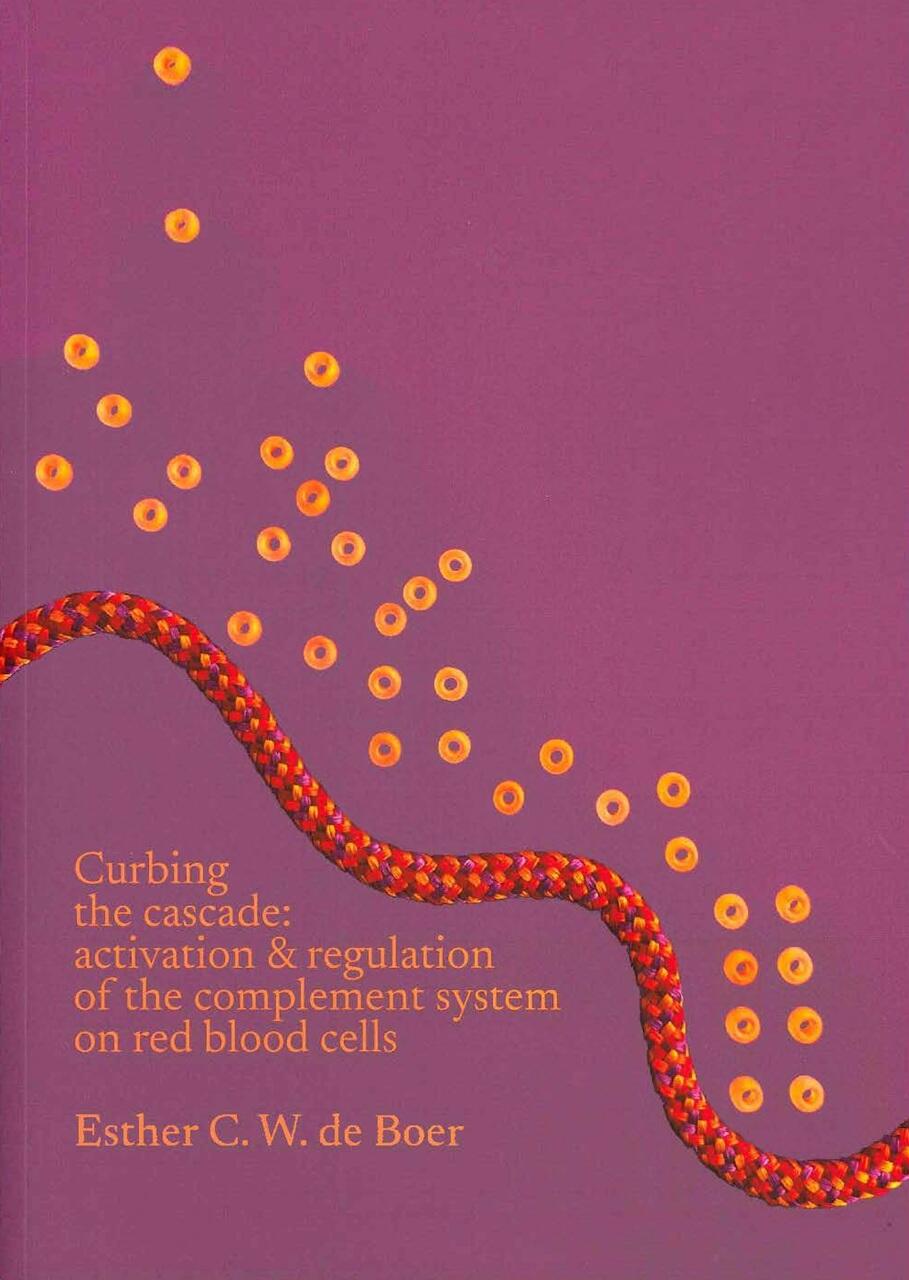Thesis Esther de Boer
On 13 November 2025, Esther de Boer defended her PhD thesis 'Curbing the cascade: activation and regulation of the complement system on red blood cells' at the University of Amsterdam.
Promotor: Prof TW Kuijpers MD PhD
Copromotores: I Jongerius PhD and RB Pouw PhD
Venue: Agnietenkapel, University of Amsterdam

The complement system is an essential part of the innate immune system, comprised of plasma proteins and associated membrane-bound complement regulators and receptors. As the complement system is omnipresent and highly destructive, it needs to be tightly regulated to prevent unwanted activation on host cells. Healthy cells depend on a combination of soluble and membrane-bound complement regulators to ensure sufficient protection. Red blood cells are of specific interest in the complement field, as these cells are continuously exposed to complement activation in circulation, and complement activation is involved in many red blood cell disorders.
This thesis investigates activation and regulation of the complement system on human cells with two main aims: to investigate mechanisms of complement activation on human cells, and to elucidate expression patterns and functions of membrane-bound complement regulators. We show that the alternative pathway can become redundant upon strong classical pathway activation on cell surfaces. In autoimmune hemolytic anemia, IgM rather than IgG autoantibodies drive complement activation. Autoantibodies against can also trigger red blood cell vesiculation, which in turn activates the complement system via the classical pathway. In severe complement-mediated AIHA, therapeutic C1-INH does not overcome hemolysis.
Regarding the expression of complement regulators, we show that CD46 is lost from the erythroid lineage before enucleation, and that CR1 is not expressed on reticulocytes derived from in vitro erythropoiesis. We show that CD55 deficient red blood cells are more sensitive to complement upon strong triggers in vitro, but do not find signs of complement activation on red blood cells or hemolysis in CHAPLE patients. Lastly, plasma levels of cell-free CD55 are increased in paroxysmal nocturnal hemoglobinuria.
Chapters
Chapter 1
General introduction
Chapter 2
The contribution of the alternative pathway in complement activation on cell surfaces depends on the strength of classical pathway initiation abstract
Chapter 3
The distribution of complement regulators during in vivo and in vitro erythropoiesis
Chapter 4
A pedigree with CHAPLE disease: variable penetrance and treatment with pozelimab abstract
Chapter 5
Cell-free COSS is secreted into circulation in PNH patients
Chapter 6
Cl-inhibitor treatment in patients with severe complement mediated autoimmune hemolytic anemia abstract
Chapter 7
A novel flow cytometry-based indirect antiglobulin test (Flow IAT) reveals hidden lgM as driver of complement activation in cold and warm autoimmune hemolytic anemia
Chapter 8
Vesiculation as potential novel pathogenic mechanism in lgA autoimmune hemolytic anemia (AIHA) abstract
Chapter 9
General discussion
Download
Download PhD thesis from university repository (when available)